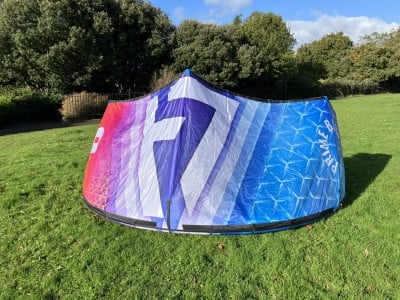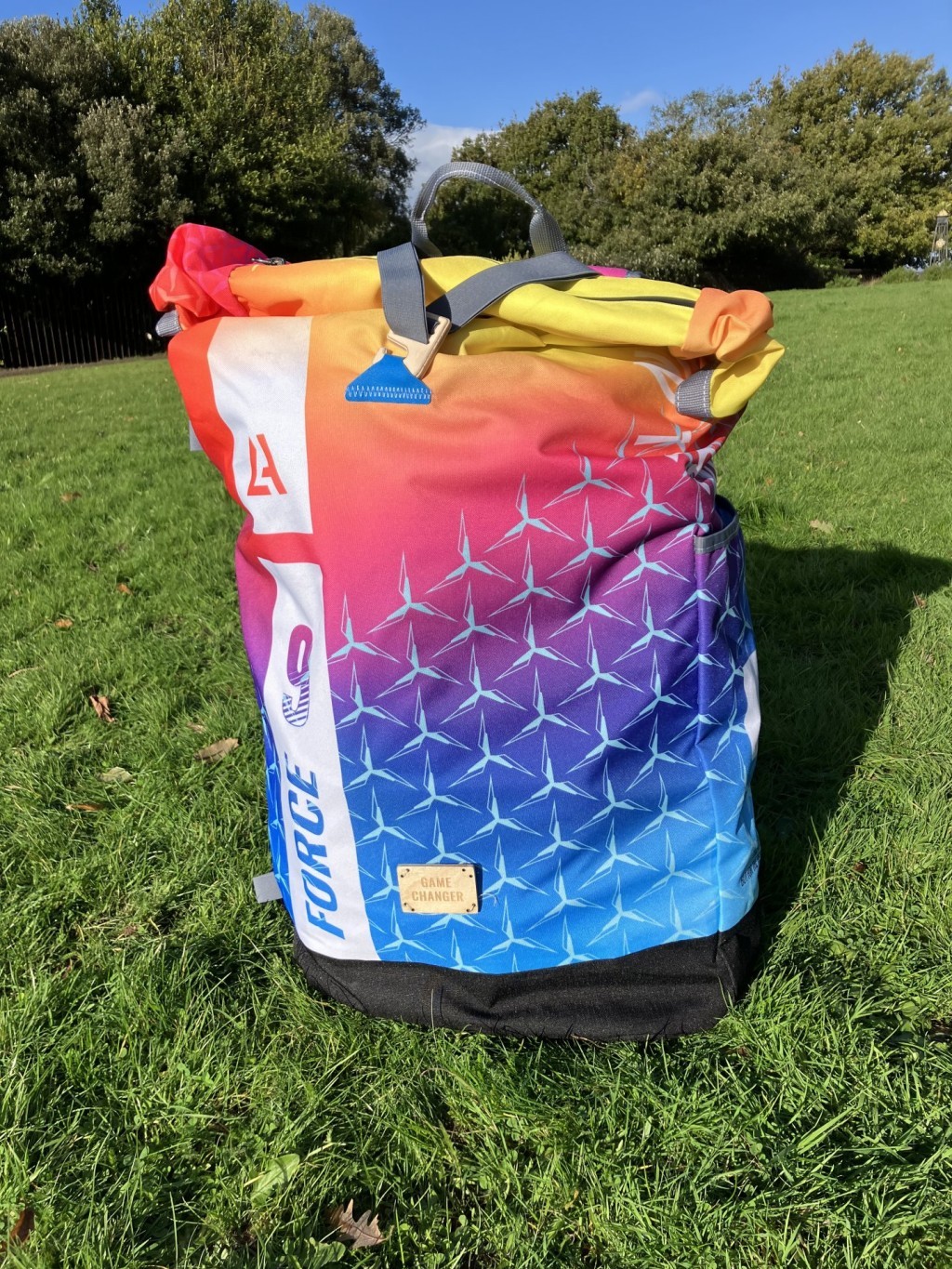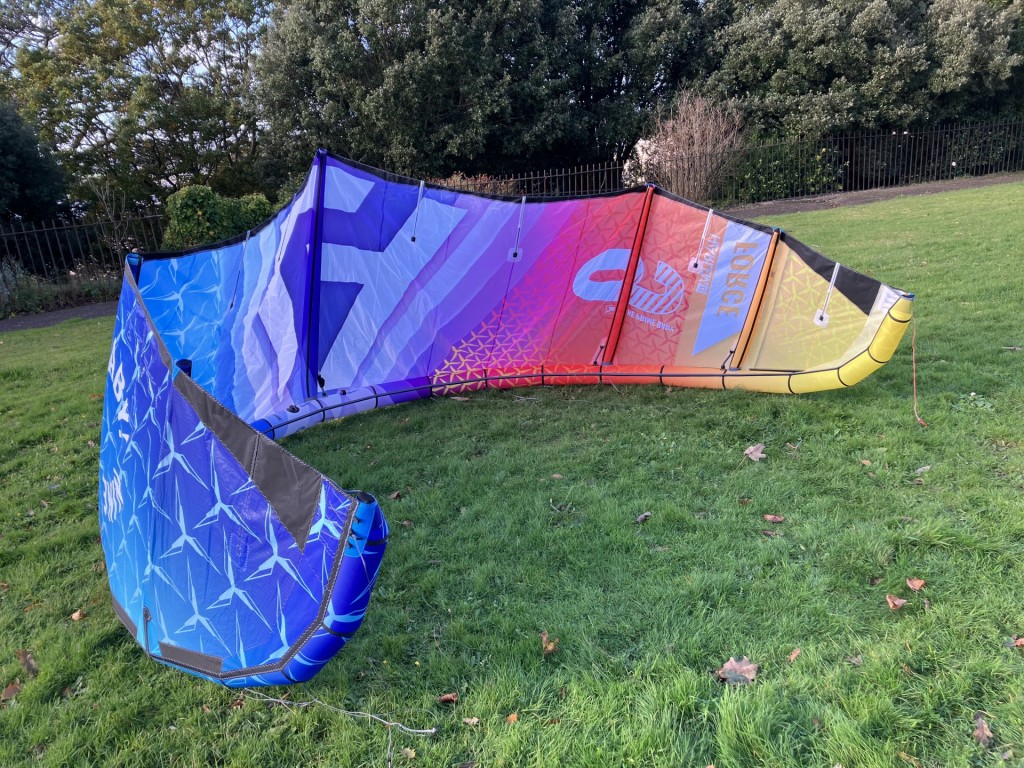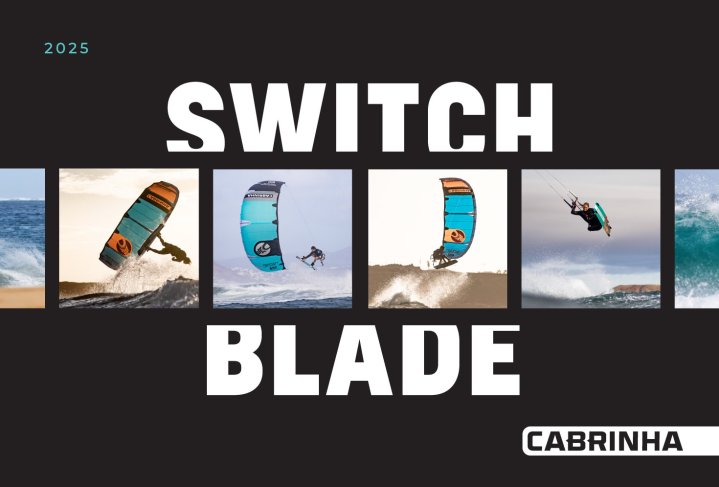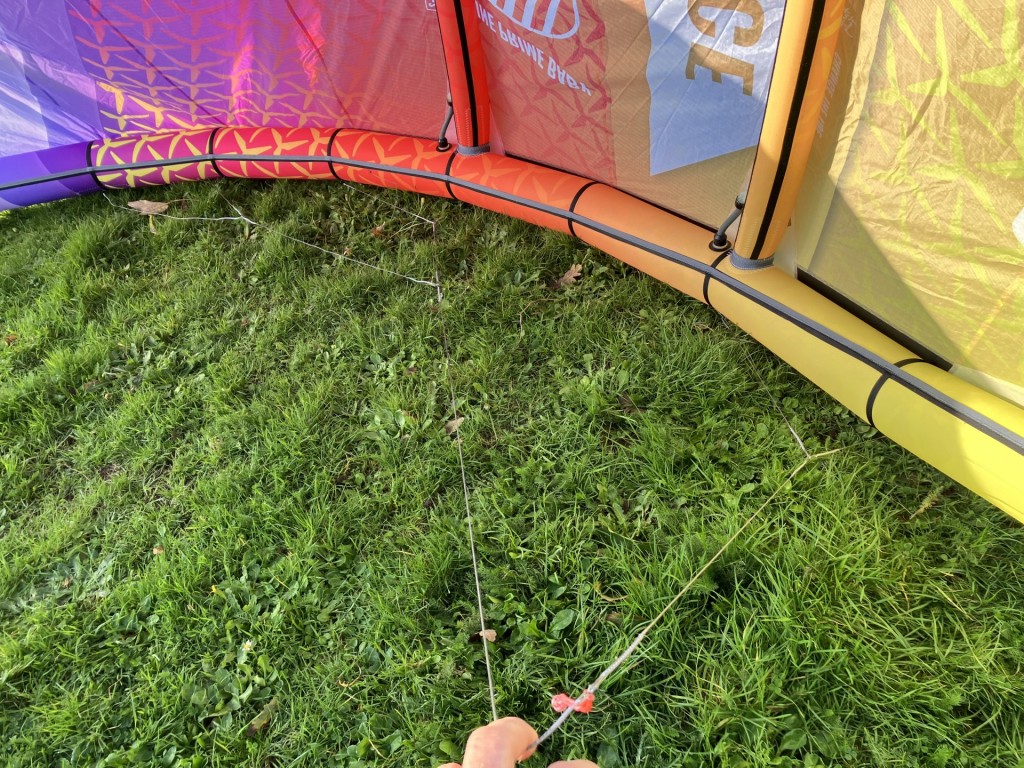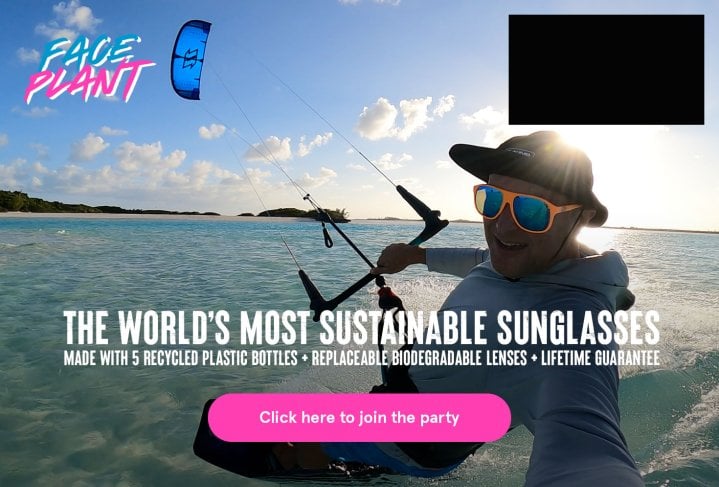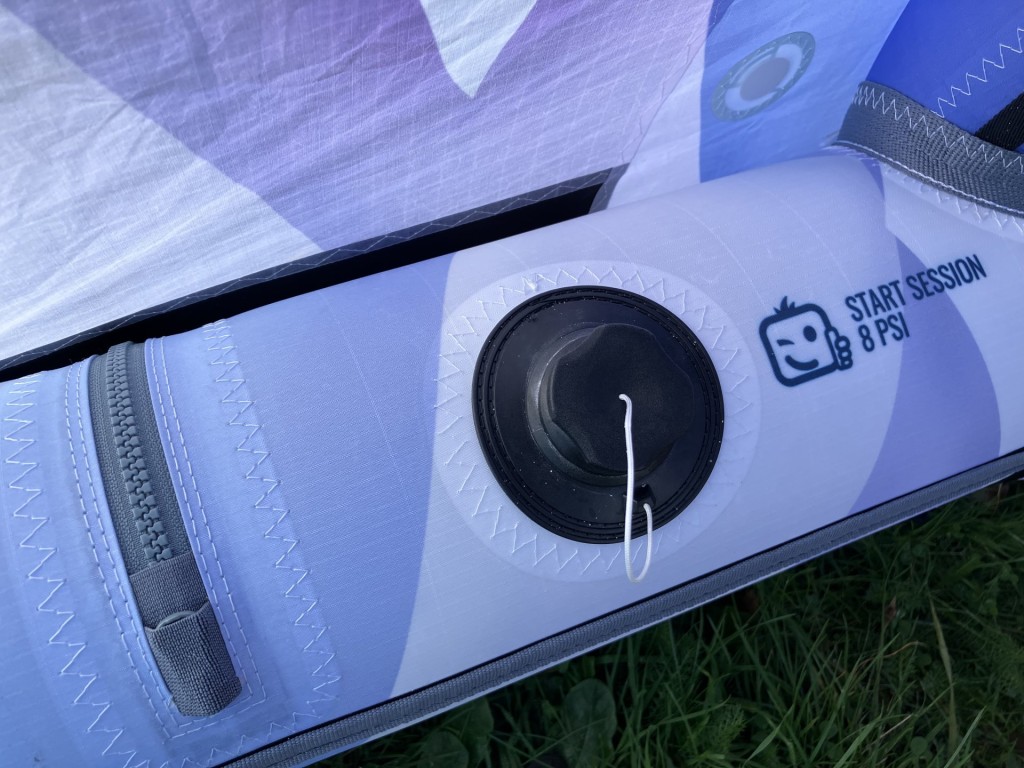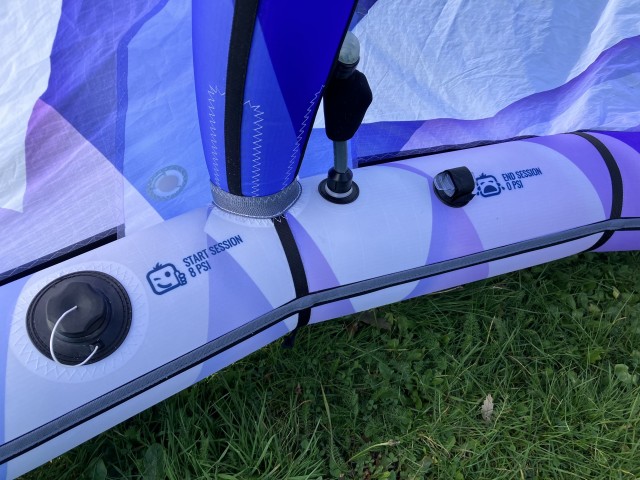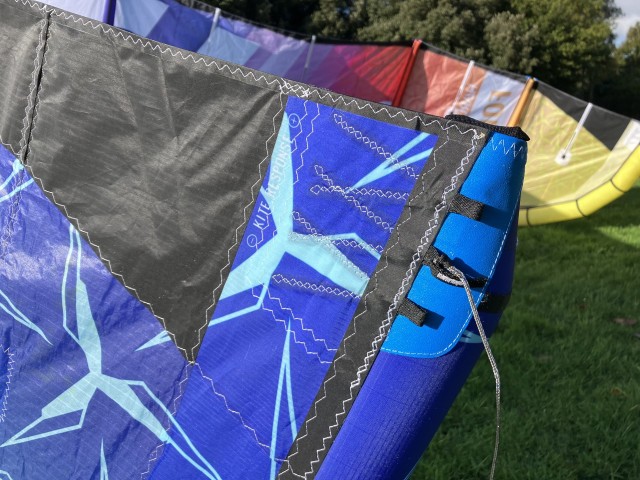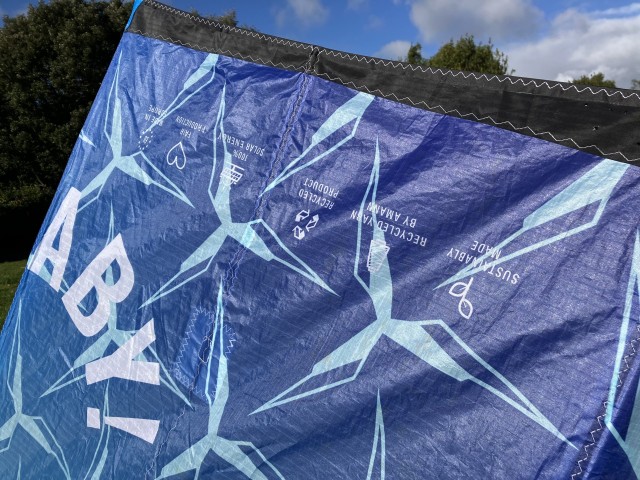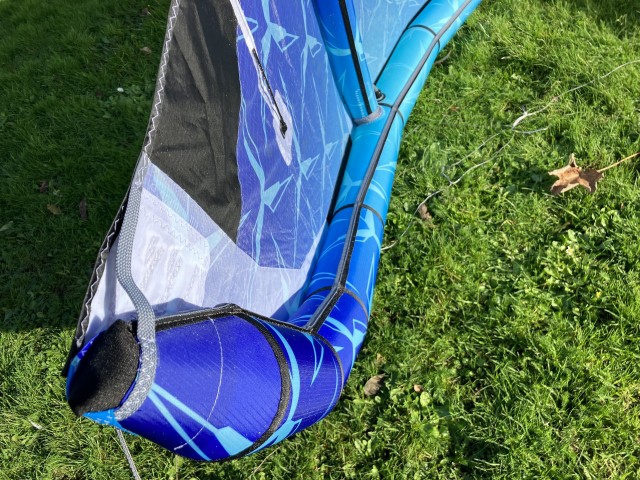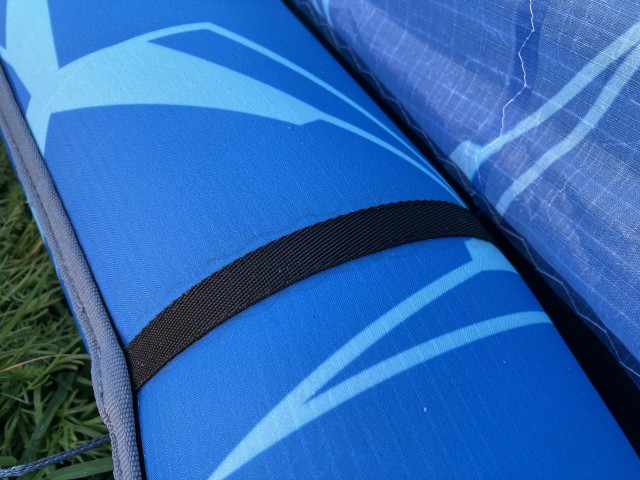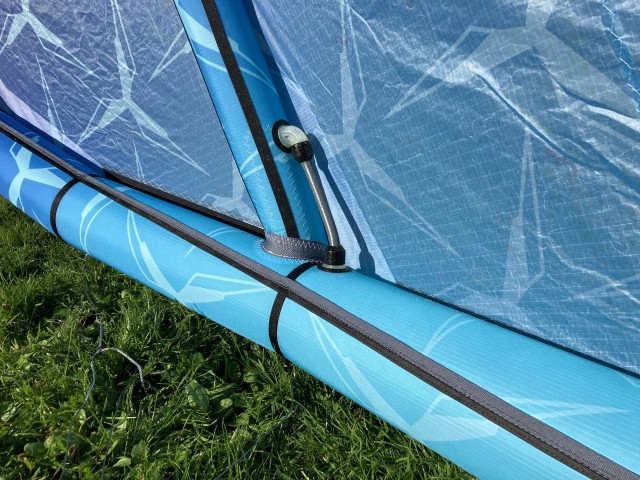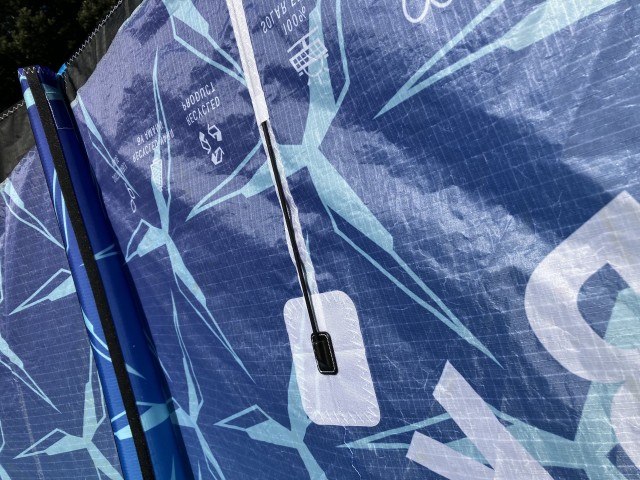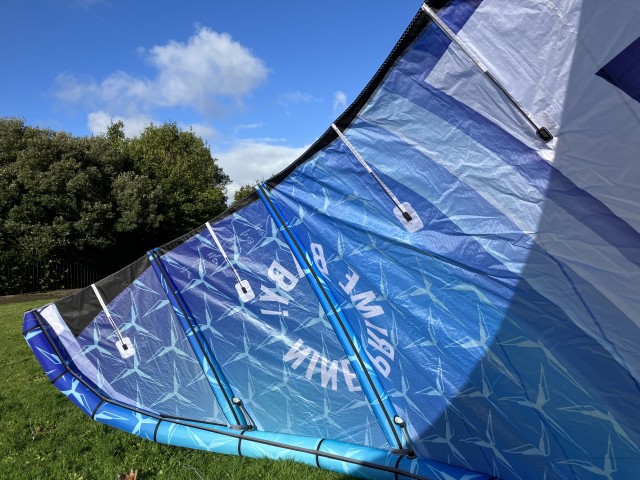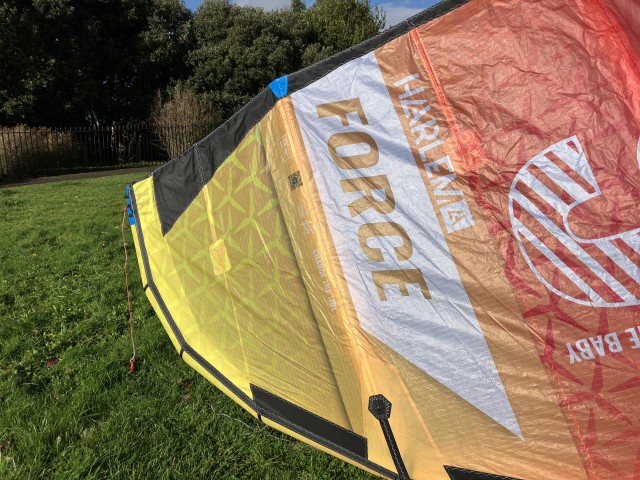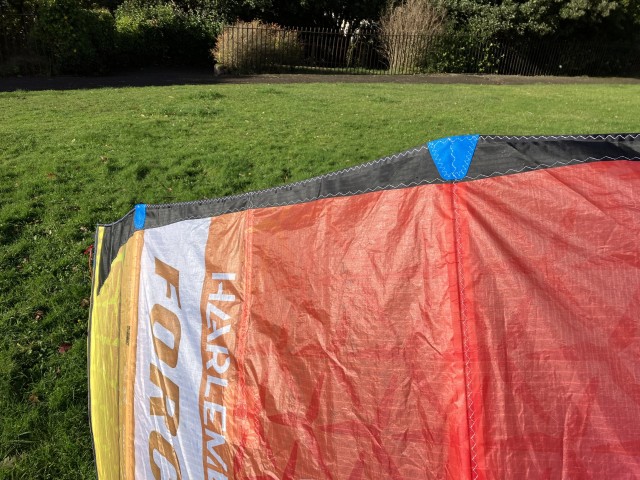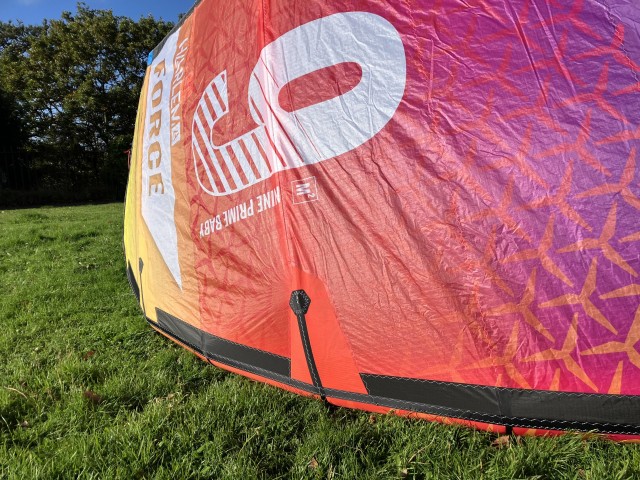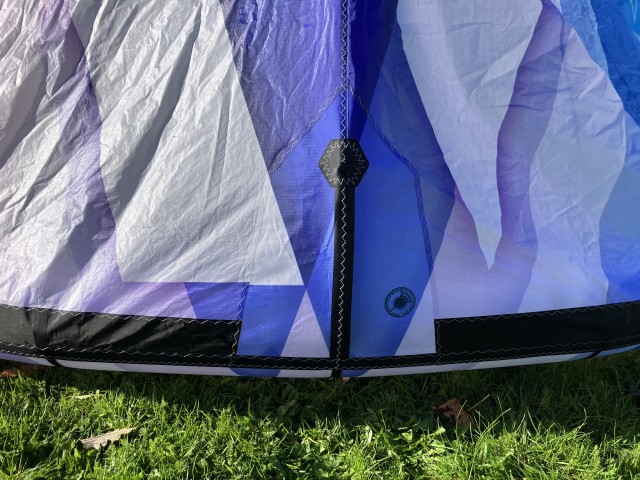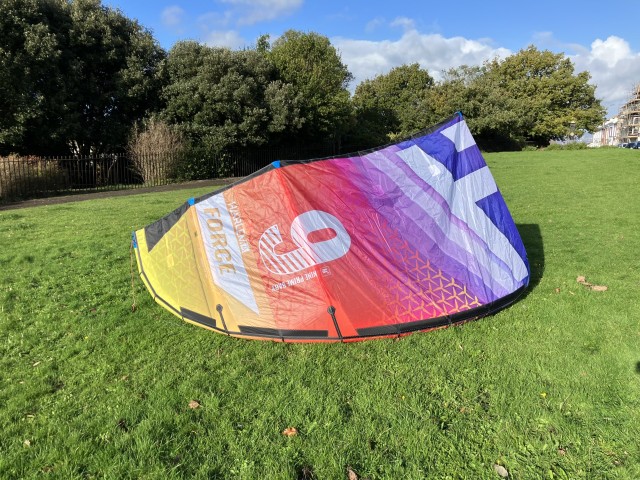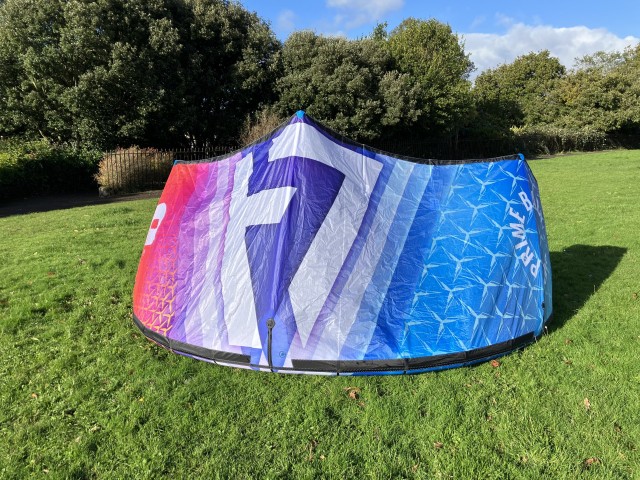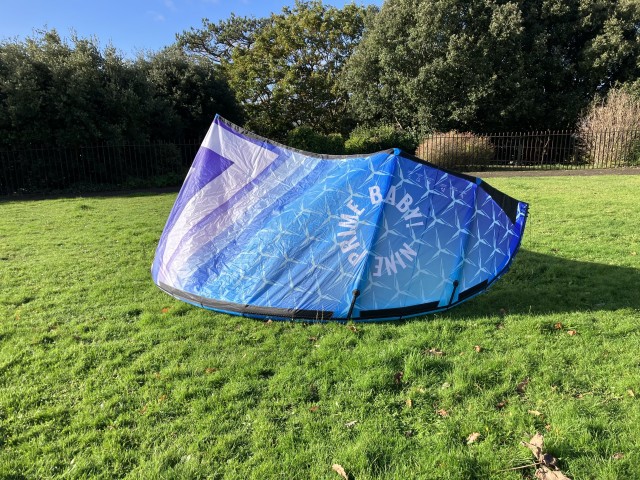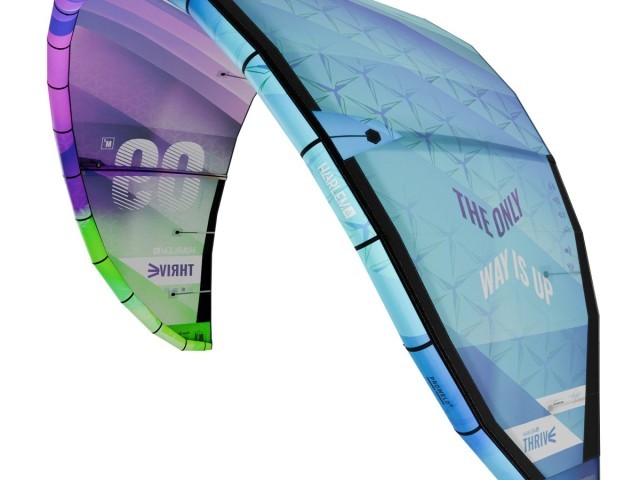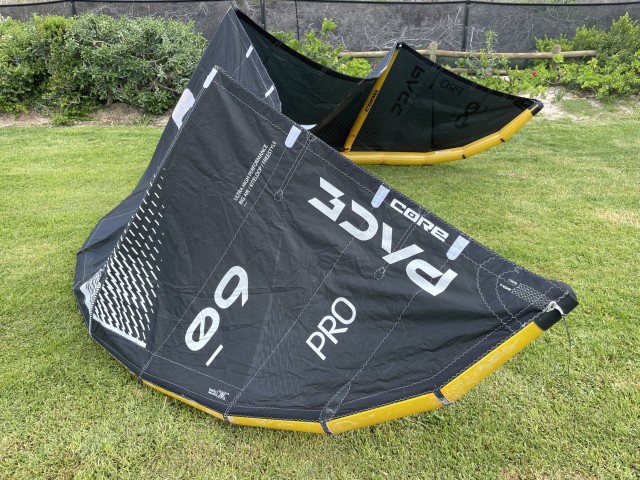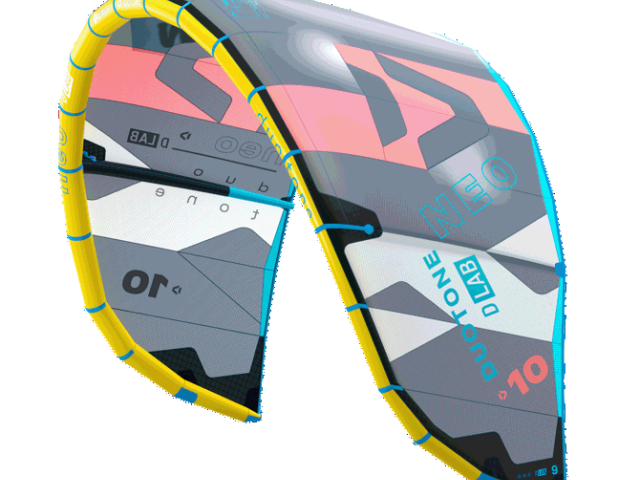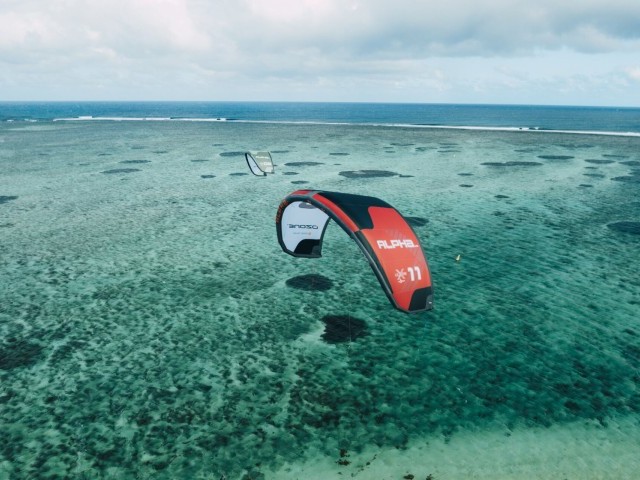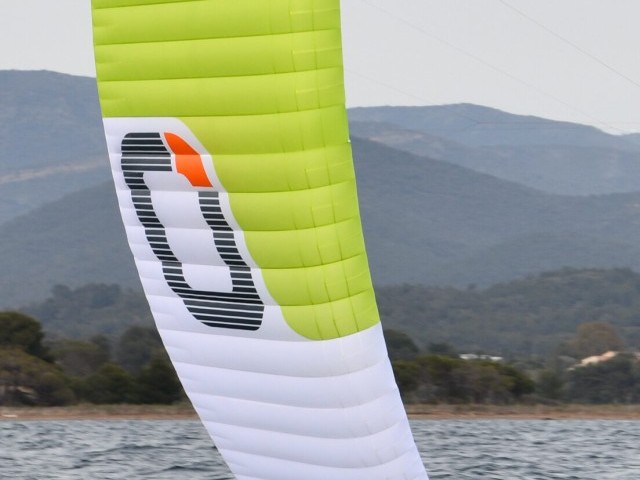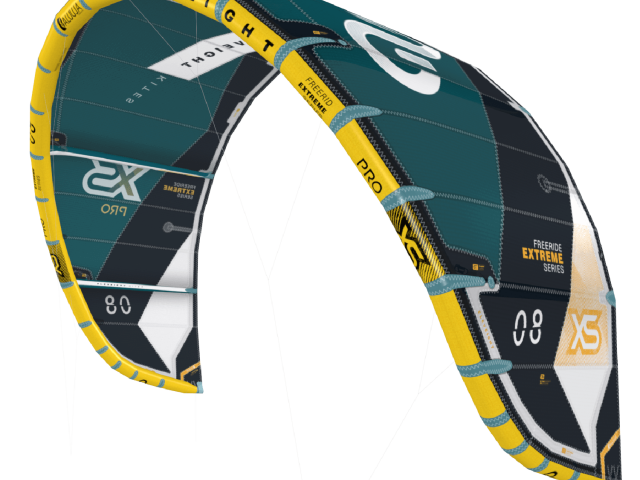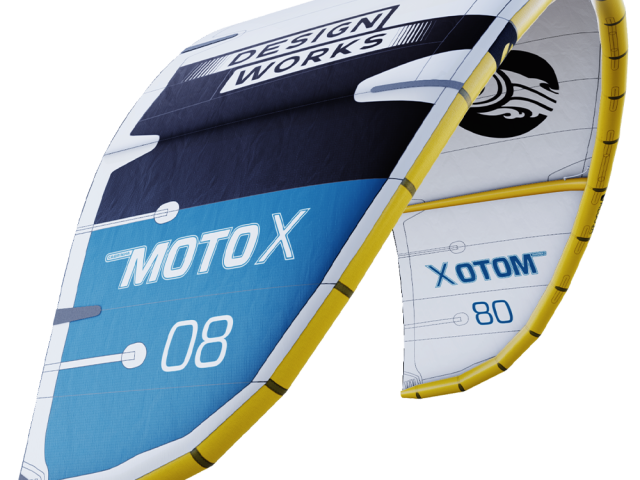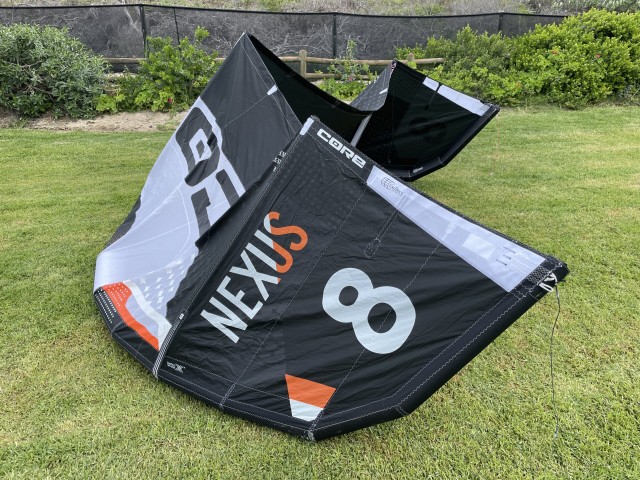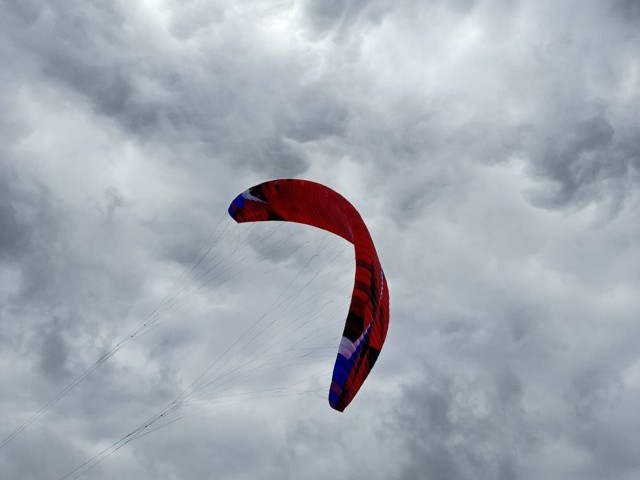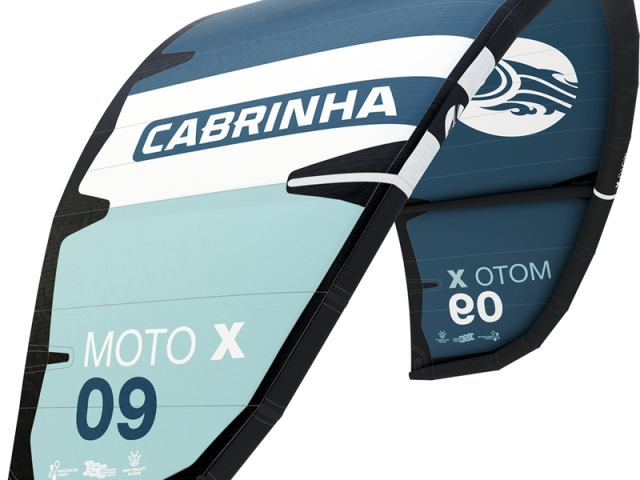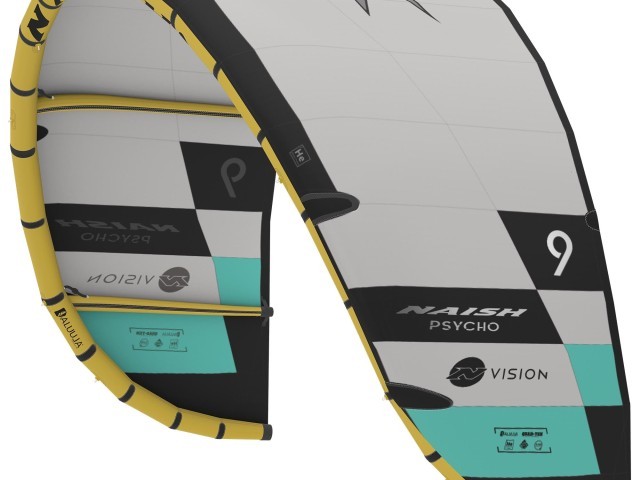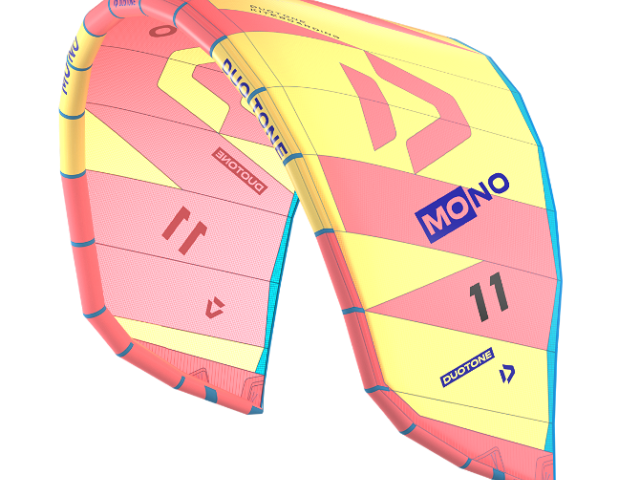At A Glance
The Force is the first product released in Harlem's new 'Game Changer Lineup'. This represents more than just a new high-performance big air/freeride kite addition to the Harlem range. It represents a totally new way to manufacture leading edge inflatable kites. The Force is one of the first kites on the market to be produced at the Brainchild facility in North Macedonia, Europe, and to benefit from a whole host of their bespoke technologies and materials. These come with performance, aesthetic, environmental and even security benefits!
Before we get too stuck into the long list of production details that set this kite apart from almost every other LEI kite out there, let's review its design and see where it sits in the market. The Force is a relatively high aspect 5 strut performance freeride/big air machine, so it is bidding for the top spot in the hottest market segment right now.
Before you've even put the kite in the sky, you can tell it is designed to handle strong winds and provide a reassuring, stable riding experience. On top of the 5 strut outline, it has a high count of solid carbon fibre trailing edge reinforcement battens from wingtip to wingtip, a 6 point front line bridle and features the all-new 'Proweld' construction on the leading edge and struts, which produces a stiffened airframe. The 6 point front line bridle is fixed and pulleyless, while the steering line pigtail has 3 attachment points to adjust both turning speed and bar pressure.
The Proweld leading edge technology has been designed and developed by Brainchild's founder, Ralf Grosel. With any LEI kite, to create a smooth leading edge curve, the leading edge must be manufactured in segments. The more segments you have, the smoother the curve you produce, but at the expense of additional seams. These seams require the overlapping of material and stitching, which increases labour costs and weight. The Proweld system allows segment panels to be butted up immediately next to each other and welded together. We're told this results in 20% weight savings and a 30% increase in airframe stiffness. Given that the Proweld construction methodology provides significant weight savings and stiffness increases, Harlem has been able to use a well-established weight of traditional Dacron in the leading edge. This is still one of the most durable materials on the market, so the Force will deliver year after year.
The Force has some out there features! The colourways and graphics give a nod to the wind-powered nature of our sport, and the colourways are seriously vibrant. This is all possible thanks to digital printing technology. Up until now, all kites have been made from panels of already coloured canopy material, and any graphics have to be added through screen printing. The Brainchild facility only holds stock of white material and digitally prints all of the colours and graphics onto the kite in one go. This reduces waste, increases production resilience, significantly reduces the water consumption of the overall colouring process and allows for insane levels of customisation and design.
If you log onto the Harlem website, you can play around with their customiser and build your own Force with your own colour scheme, graphic layout and logos! The eco credentials don't end there, as the European factory in which the Force is produced runs on 100% solar energy, and all of the threads and webbing are 100% recycled and sourced from Germany and Austria. On top of all that, the leading edge contains a tiny Booomtag NFC chip. You can scan this by holding any modern smartphone up to the kite close to the inflate valve, register your details to the kite to unlock lost and found and search and rescue functionalities. The future is here…
Sizes: 6m, 7m, 8m, 9m, 10m, 11m, 12m
In The Air
The Force is lively from the word go, in a good way. It has an immediacy of response to both bar throw and steering inputs, which, combined with the fact that it sits back a tiny bit in the wind window, makes it feel very eager and ready to go. Looking up at the Force at 12 o'clock, it is a relatively high aspect outline. Its initial turning response when you and the kite are both static is as you'd expect of a high aspect design, only much quicker. From a stationary neutral zone position, it has that pivotal turning response, but it rotates so much quicker than you expect, and before you know it, you've let the steering input off, and it is driving forward with purpose. This turning style also changes dramatically once the kite already has some forward momentum, which I'll come back to later.
On the water, the Force feels extremely solid, even in powered and gusty conditions. It had the pleasure of experiencing some seriously gusty UK autumnal frontal weather, and I was glad to be on this kite! Just as it did when standing on the beach, the kite sat back a little in the wind window, and whilst it did drive forward slightly in response to a gust or loading an edge, it didn't drive forward much. At first, I thought this might make it a bit of a handful when overpowered, but it remained comfortable thanks to the bar throw depower available and the light/medium bar pressure. It never did anything unexpected in the strong gusts, and the canopy remained ROCK solid throughout. There was very little trailing edge flutter throughout the whole session, which should hardly be surprising given the distribution of load over the 6 point bridle and the generous helping of carbon trailing edge battens I mentioned previously.
The response to input on the water remains fast both when under a lot or a little line tension, and as you start to pilot the kite more aggressively, you see and feel how the turning response changes when you go into a turn when the kite already has some forward speed. It becomes far more of an arcing turn throughout which the speed and power remain fairly constant.
You'll be delighted when you first jump. In all honesty, I nearly landed on a winger when coming in to land my first jump, as I hadn't accounted for how high and far I was going to go. The vertical lift, downwind glide, and landing performance are as you'd expect of a higher aspect design… impressive. You get plenty of vertical height even if you've done a fairly poor job of loading and releasing an edge. You stay in the air for a long time, cover a good downwind distance as you do, and the landings are buttery soft. Forgive me, as I'm hardly getting old, but I've been kiting long enough to have abused my knees enough to appreciate a kite that can bring you down gently when its a bit choppy. The Force does just that!
Where the Force shines is how it remains so fast and responsive when you're hanging under the kite during a jump or when you throw it into a loop. I've always found that higher aspect kites can be a bit sketchy to loop as they will either provide you with the height but loop slowly or loop very inconsistently without much forward drive. That just isn't the case here. The kite is fast to turn, gets around and recovers quickly, and provides tons of lift to break your freefall and provide as soft a landing as a jump. I don't remember the last time I landed loops so consistently gently. It is definitely a modern feeling kite loop. What I mean by that is that it doesn't have loads of natural forward yank. It makes loops easy. You'll have plenty of height to your loops, but you'll have to commit to easing off the steering input (or maybe adjusting the rear line pigtail setting on the kite) if you want to add extremity, get the kite lower, and get more forward pull.
Overall
The Harlem Force is an exciting kite that has come at an exciting time in kiteboarding. Instead of jumping on the alternate performance material bandwagon, Harlem has partnered with Brainchild Production to introduce new construction methodologies from a truly environmentally conscious production facility in the heart of Europe. The Force will be enjoyed most when paired with a twintip as it is definitely tailored towards the performance freeride/big air market. When done so, I can see it bringing out the best of all levels of riders wanting to go high!
Videos
This review was in Issue 102 of IKSURFMAG.
For more information visit Harlem KitesurfingRelated
By Liam Proctor


